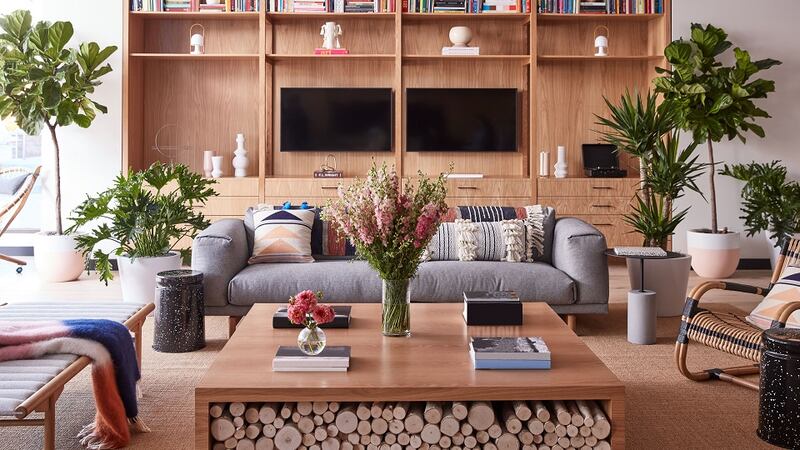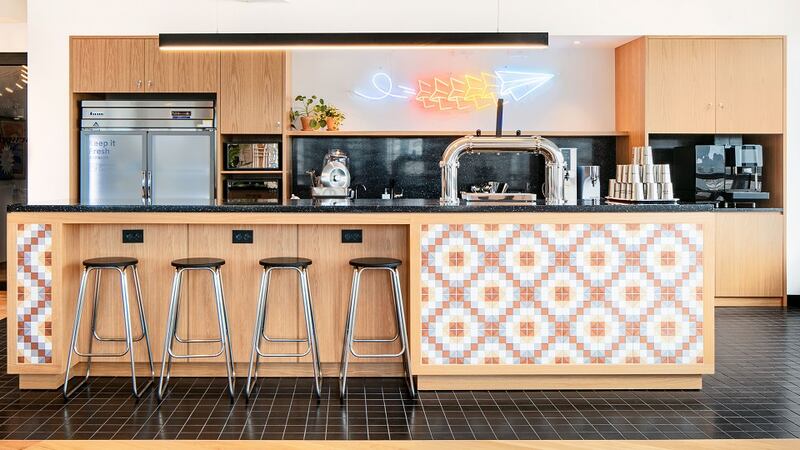Clever design can help us overcome all sorts of challenges. Right now, with the pandemic changing the way organisations view their workspaces, good office design is vital.
Buildings must have space for social distancing, accommodate increased sanitisation protocols and allow for new safeguards, such as lower lift capacities.
With flexibility at their core, WeWork’s office buildings are perfectly placed to provide strong health and safety protocols such as improved indoor air quality and enhanced cleaning and personal space measures, says Franquibel Lima, WeWork’s head of design EMEA.
After all, design goes far beyond aesthetic elements, such as form, colour and materials, he points out. “It is about functionality too.”
A good design schema must also encompass utilities such as heating, ventilation and air conditioning. We know that since the advent of Covid-19, air conditioning is more important than ever. WeWork is taking a proactive approach to increasing the flow of fresh air in its spaces as members return to the office, as well as designing inviting outdoor spaces for people to enjoy.

Design flair
Great office design is about having the ability to select the type of space that you want to work in, depending on the type of work that you're doing.
The company's design flair has captured the attention of the architectural and design media. Architectural Digest reported on the early 2020 opening of 10 York Road in London's Westminster thanks to the inclusion of its many design flourishes. These included a 'library' workspace that gives way, via a bookcase door, to a speakeasy-style private meeting room. The magazine also noted the "casual twist on the auditorium, which has tiered seating with HAY sectional sofas instead of traditional theatre seats."
WeWork’s Dublin buildings combine a mix of beautifully designed lounges, private offices, phone booths and conference rooms. Those using them can enjoy onsite showers and fresh outdoor spaces, as well as dedicated games rooms for relaxing and connecting with others.
“The DNA of what we are trying to do at WeWork acknowledges that not all types of work that people do are attached to a desk and a computer,” says Lima. That means for those working in a space, deliberate design decisions allow you to choose from options as diverse as a nook, a meeting room, a lounge, a phone booth, conversation or classroom – and, of course, your desk.
Not working 9 to 5

“It not only challenges the 9-5 concept but in many ways it actually makes people be more productive and just feel a lot more in tune with what they need to do, by having space that speaks to that,” Lima says.
Traditional notions about the length of the working day, the fixed workspace or cubicle and the desktop computer have already become less relevant to the way people work today. Office design must also reflect that through the provision of amenities, he suggests.
Access to lounge spaces, nooks or barista stations all help people to “break from their daily routine,” he says. In the case of the library and speakeasy at London’s 10 York Road, members can bring guests in to do quiet work in the library space, then use the speakeasy for meetings.
That can then, Lima explains, transition into an end of day scenario where you could get catering in, and blend into a social aspect, outside of work hours. This allows workspaces to offer flexibility throughout the day.
It is WeWork’s design thinking which helps facilitate these new ways of working. “It breaks the mould of the 9 to 5, with the objective of making work/life healthier. Work doesn’t have to be in front of the monitor the whole time,” Lima says.
Boosting productivity
What people need from an office has changed, and those that are most familiar to us were devised in the 1960s.
“It was very much about people coming into the office, sitting at their desk in a cubicle and leaving at a specific time. That doesn’t necessarily mean that they were being very productive,” Lima points out.
Good office design marries form and function, whether that be in relation to the use of natural light, good spacing, the right air quality or the ergonomics of office furniture. Lima points out that a better physical environment at work can help with issues such as tiredness and eye and back strain too.
Design is more than interior décor. It can help to boost work rate too. “If we offer, through design, a variety of spaces for people to work from, where they can break from sitting at their desk, just by getting some time to rest or being encouraged to be mobile in the office environment - that makes them more productive too,” Lima says.
“The connectivity that people have with others by being in a physical office environment drives them to be more productive in their collaboration with others. Design has a huge role in that because you can only gather in spaces that are designed to enhance the opportunities for people to do so in the right way,” he says.
WeWork’s design team is informed by feedback from its users.
“The majority of our members are enterprise companies. But ultimately the people who are actually evaluating the quality of the experience that we give them are the employees of those enterprises.”
For employers, an attractive office can be a powerful tool for talent acquisition, retention and engagement.
Flex benefits

The most important change to have taken place in office design in recent years has been the acknowledgement, “that one size doesn’t fit all. That it’s about building spaces that allow for flexibility,” he says.
Technology constantly shifts, and offices need to be flexible to accommodate that fact too.
“We are also looking at things like global mobility and offering to our members, the ability to decentralise their physical offices and allow their employees to work from different points of the same city or even different cities and different countries.”
WeWork’s in-house design team keeps in constant touch with all its other teams, from member experience to sales, real estate and operations. This level of synergy and coordination also makes for exceptionally well designed office spaces, he says.
“At WeWork we inhabit our own spaces too, so we’re constantly looking at things that work and don’t work for us, not just the design team but all departments,” Lima says. “Everyone is experiencing our spaces and observing what is successful – and working on what can be even better.”









